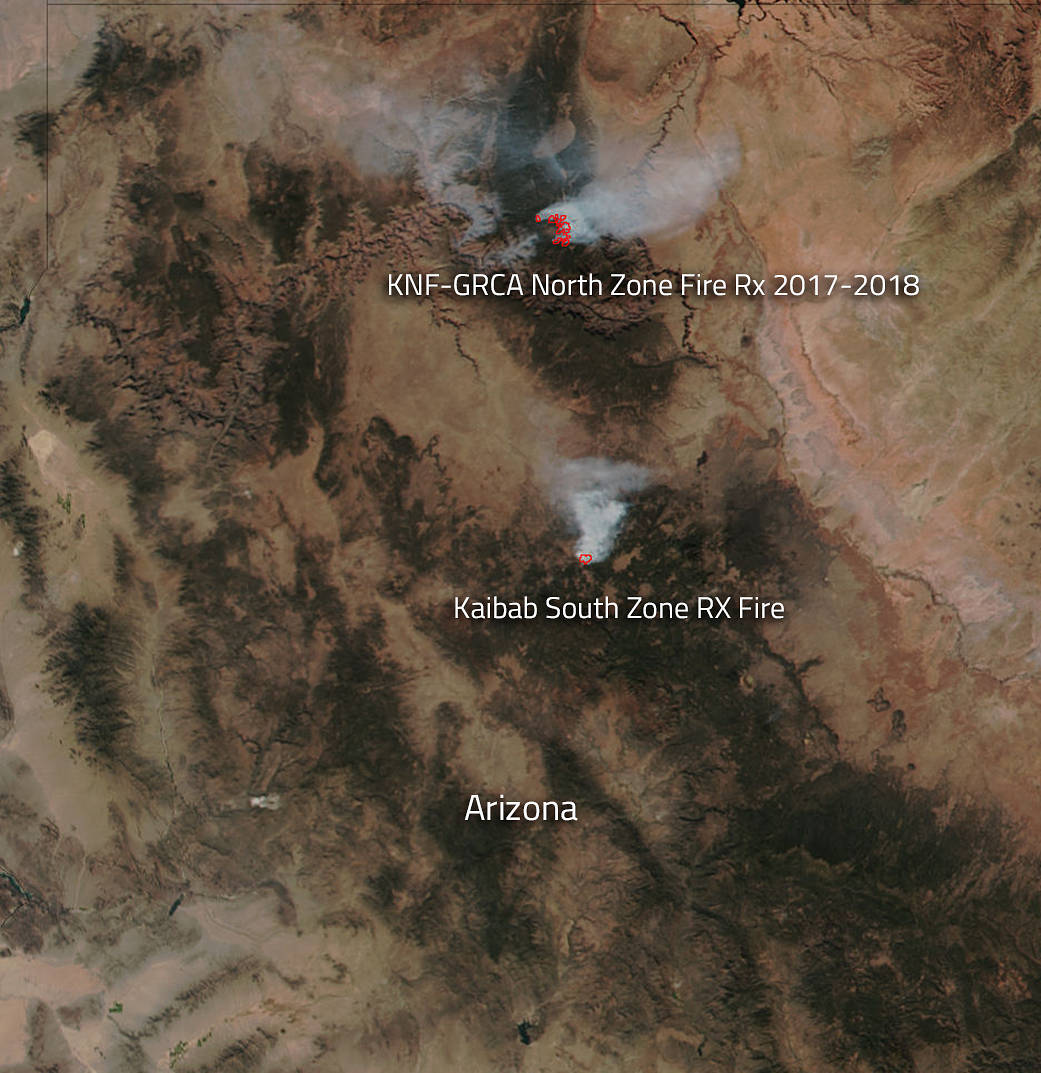Are fires always bad? Not necessarily. Wildfires are almost always destructive and dangerous since they can take out swaths of land with abandon and without any forethought. But prescribed fires can actually be good for the environment and for communities nearby areas that are prone to wildfires. In Arizona, the National Park Service and US Forest Service fire managers, working together as the North Zone Interagency Fire Management Program, have set quite a few prescribed fires around the Grand Canyon Park area. Both agencies also anticipate initiating more prescribed fire treatments this week as weather and fuel moisture conditions allow on the North Rim of Grand Canyon National Park. The northern area that is seen in the satellite image is in the KNF-GRCA North Zone area.
The southern area of prescribed fires is in the Kaibob South Zone. Inciweb reports that: “Crews have been working steadily on the Green Base project and are expecting to complete ignitions by the end of this week. Acres that have been treated successfully to date are as follows. Dry Lake Project: 5221 acres; Hardy Project: 3846 acres; Reed Project: 417 acres.
So why are prescribed fires even necessary? After many years of fire exclusion, an ecosystem that needs periodic fire becomes unhealthy. Trees are stressed by overcrowding; fire-dependent species disappear; and flammable fuels build up and become hazardous. The right fire at the right place at the right time:
- Reduces hazardous fuels, protecting human communities from extreme fires;
- Minimizes the spread of pest insects and disease;
- Removes unwanted species that threaten species native to an ecosystem;
- Provides forage for game;
- Improves habitat for threatened and endangered species;
- Recycles nutrients back to the soil; and
- Promotes the growth of trees, wildflowers, and other plants;
NASA’s Suomi NPP satellite collected this natural-color image using the VIIRS (Visible Infrared Imaging Radiometer Suite) instrument on October 25, 2017. Actively burning areas, detected by MODIS’s thermal bands, are outlined in red. NASA image courtesy Jeff Schmaltz LANCE/EOSDIS MODIS Rapid Response Team, GSFC. Caption by Lynn Jenner with information from Inciweb



























